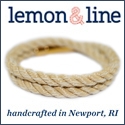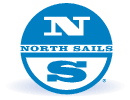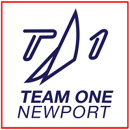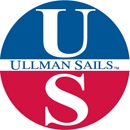Scuttlebutt News Center:
Terry Hutchinson - Winning the Farr 40 Worlds
(September 13, 2004) Scuttlebutt caught up with Terry Hutchinson, fresh from his win at the 2004 Farr 40 Worlds, where he was tactician onboard Jim Richardson's Barking Mad.
What did this racecourse require for success?
Boat speed. There was fairly flat water in the mornings with the ebb starting halfway through the day. No big surprise that being fast is the key to success, but it allowed us to not have to take a lot of chances. Conservative tactics-low risk: We started every race safe, middle of the line and low risk. The same principles applied at marks where it is easy to foul out. We were always of the mindset that single digits throughout the scorecard would win the regatta going away! However, I never really thought that it would work as well as it did.
How helpful was your J/24 Worlds win in ’98, which was held in the same race area as the Farr 40 Worlds?
It was very helpful. I have had a fair amount of success on the Berkeley circle and have kept fairly detailed notes about the racing that I have done there in the past years. It was good to feel confident about our game plan and decisions on the racecourse.
What was the biggest surprise in the regatta?
What boats showed up fast and what boats did not. It was great to see the success of some different boats. Steve and Fred Howe had a great regatta ending up third. They did not spend as much time preparing as some of the other teams and yet managed a great event. 2002 Worlds champion Steve Phillips is back on form and sailed strong at the end to come into the top five.
Also, the ovation that we received as we backed Barking Mad into the dock on the final day. It was an unbelievable feeling to have all of your competitors clapping and cheering for you as we tied the boat up. I have never been part of a team where we received that type of admiration from our competitors. It says something about Jim Richardson and his approach to the sport.

2004 Farr 40 World Champs (Terry, far left) |
What was key to your team's preparation?
1) Time. We spent a week in June prior to the North American Championship in San Pedro, CA testing sails in flat and choppy waters off of Long Beach. That was instrumental as it gave us time to sail with what would be our regatta shape sails and learn the intricacies of different sail shapes.
2) A good work up of regattas. We did not spend a lot of time over training but used regattas instead of pure practice days to prepare. This allowed for a focused, race prepared team.
3) The same team! We are very lucky to have such a dedicated group of amateurs: Steve Inman (bow), Tony Rankin (mast), Krissy Loewenthal (sewer), Linda Lindquist-Bishop (pit), Tim Lidgard (grinder/floater/jack of all trades) and all of their spouses. Sailing on Barking Mad is a huge time commitment and the support that we all receive from our better halves cannot go unmentioned. I do not think enough can be said about this group of individuals and how it is truly a team atmosphere on the boat.
4) The professionals on the boat: Dave Scott, Morgan Trubovich and James "Skip" Baxter. They are exactly that - professionals. They helped develop our sails and the concept with how we set the boat up. The edge in speed that we had came from their hands.
5) Finally, and most importantly, a great person/owner in Jim Richardson. In order for us to win this event, we all needed to step up our game and this included Jim. He did it to a tee!

Terry at the '04 Congressional Cup
Bob Grieser/Outside Images |
How did your 'program' compare to others? Is it true that there are teams with multiple boats and coaches in RIBS?
We do have two boats and we did use for the first time a coach, Bill Shore. The two boats get used a lot as Jim enjoys racing the Farr 40. He is the class president and from my perspective he does everything he can to promote and support the Farr 40 class. This year we raced hull #12 on the east coast and used hull #75 on the west coast. However, it is not an arms race. The beauty of the Farr 40 class is that if you have a coach/support boat on the water you are by class rules not allowed any contact with them once you leave the dock, so it is not as if this is necessary to win. In fact, we used Bill Shore for the pre-worlds and tune up to help with off-the-boat eye on the sails. At the end of it, Bill opted to stay around as he was scheduled to leave half way through the event. Is it helpful, yes. Is it necessary to win, no!
Is the class on the right track, or what suggestions would you offer to insure it remain healthy?
Without question the class is on the right track. The class is very proactive about controlling cost and doing what is in the best interest of the owner, and at the end of the day that is what it is all about. Most recently, the owners have gotten together and are forming a boat captains union (for lack of better words) to help with the management of the class rules, and to continue to develop rules that evolve as better equipment becomes available. To Farr International's credit, they are quick to admit that the Farr 40 class rules are not perfect. Hopefully, the formation of this group of boat captains can consult on cost effective rules that make the Farr 40 easier to sail.
I think sometimes the class feels it is taking some punches, as the perception is that it may be an arms race with coach boats or two boat teams. I can't speak for anybody else's program, but I believe within the Barking Mad that we ended with two boats when the sale of hull #12 fell through 4 years ago. Since then it has become an addiction. Jim loves the competition and since he has two boats, I think we have just chosen to use both instead of have one sitting in mothballs. I am sure if some one wanted to purchase one they could.
My second thought is that the Farr 40 has given back to the people who support our sport. The class keeps the responsibility of winning and losing firmly on the shoulders of the person paying the bills. At the end of the day, this is the way it should be. When you look around there are some great things happening with the TP 52's and other one design classes. I hope that these classes can follow in the Farr 40's footsteps by controlling cost and most importantly keeping it fun and attracting people to the sport.
Terry Hutchinson - Winning the Farr 40 Worlds
(September 14, 2004) Just when we thought we had asked him enough (see above), we came up with a couple of follow-up questions. Here were Terry's replies.
Any changes to how the Farr 40 class weighs the crews? Was the sauna a busy place prior to weigh-in?
The sauna was fairly busy, but the class did a great thing by allowing the owners one weigh-in from the pre-worlds. It was a great move as it allowed all the owners to have fun and enjoy the week and Owner's Party held on Monday prior to the event at David Thompson's house. As a group the Barking Mad was about 20 pounds under at the start of the regatta and probably right on after we ate so nothing major. I would suspect that a lot of the other teams were close to the same. It did not seem to be too absurd, but of course all the steam in the St. Francis YC steam room could have blurred my vision.
What was the scuttlebutt on John Kilroy's team recutting their sails after measurement, which was not allowed, and how did the class handle their penalty?
Honestly, it was hard to say other then what was read on the notice board. I can see the Samba team acted in what they thought was a legal manner, and in how they made an honest mistake. At first the jury took a hard stand, which was no medium jib at all. Ultimately, on the evening prior to the first day, the jury allowed an older sail to be used. I am not sure how that decision was reached, but I believe that it was fair as competing in this event without a medium would have been impossible. Perhaps the jury realized their initial punishment was too severe for the infraction.
What's the latest in the tiller vs. wheel debate? Your team has a wheel, but we thought tillers were better?
Tough call...flat water the wheel seems to be fine and when the breeze is up I would suspect the wheel is really good. But, go to light air and lump and it is an entirely different story. We have gone round and round on the Barking Mad with this one and I cannot say that we have ever won or lost a regatta because the boat had a wheel or a tiller. I still believe that whatever the owner is most comfortable with is what they should go for on the boat.
... and before you let me off the hot seat, I need to mention one more professional that in my earlier post-regatta fuzz was left out. The boat captain for the Barking Mad is Jane Stevenson, and she has done an incredible job with the boat. While she does not race on board, she is directly responsible for the maintenance and day-to-day care of the boats. We have worked together now for 3 years and knock on wood, NOTHING has gone wrong. I know that I am going to catch some well-deserved heat for this one but wanted to make sure that everyone knew the preparation of our boat was PERFECT and that Jane was completely responsible for that aspect of the program.
|




















